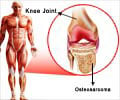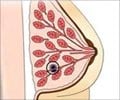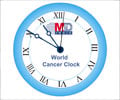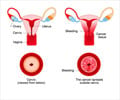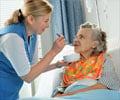FAQs
1. Who is most likely to get cancer?
Cancer risk increases with age, especially after 50, and varies by gender, with men more prone to prostate, lung, and liver cancers, and women to breast, ovarian, and uterine cancers. Family history, inherited genetic mutations, and lifestyle factors like smoking, heavy alcohol use, obesity, and inactivity also raise the risk. Environmental exposures, chronic conditions, and hormonal factors, such as postmenopausal status or long-term hormone replacement therapy, further contribute. Regular screenings and healthy lifestyle choices can help manage these risks (10✔).
2. How to prevent cancer?
While there's no guaranteed way to prevent cancer , certain lifestyle changes can significantly reduce your risk. Key preventive measures include avoiding tobacco use, limiting alcohol consumption, maintaining a healthy weight, staying physically active, and eating a balanced diet rich in fruits, vegetables, and fiber .
Regular screenings, such as mammograms , colonoscopies, and Pap smears, along with early detection and genetic testing if needed, can help catch cancer early when it's more treatable (11✔).
3. Is lung cancer in non-smokers more difficult to detect?
Lung cancer in non-smokers can be harder to detect early because it may not be suspected right away. As many of the symptoms overlap with other respiratory conditions, doctors may not immediately consider lung cancer, making early diagnosis more challenging.
Lung cancer is more treatable when detected early, but screening for non-smokers is not as routine as for smokers. However, people with high exposure to environmental toxins or a family history of lung cancer should discuss screening options with their healthcare provider (12✔).
4. Can colon cancer recur after treatment?
Yes, colon cancer can recur, especially if it has spread to other parts of the body. After initial treatment, regular follow-up appointments and screenings are necessary to detect any recurrence early. Lifestyle changes, such as maintaining a healthy diet and exercise regimen, can also help reduce the risk of recurrence (13✔).
5. Can men get breast cancer?
Yes, men can get breast cancer, though it is much less common than in women. Men have a small amount of breast tissue, and while their breasts are not as developed as women's, they are still susceptible to cancer.
The risk of male breast cancer increases with factors such as age (most cases occur in men over 60), family history, genetic mutations (such as BRCA1 or BRCA2), hormonal imbalances (especially elevated estrogen levels), and past radiation exposure. Though rare, men should be aware of signs like a lump in the breast, skin changes, or unusual nipple discharge , as early detection is important for improving outcomes (14✔).
6. What is cancer of unknown primary (CUP)?
Cancer of unknown primary (CUP) is a type of cancer where cancer cells are found in the body, but the original (primary) site of the cancer cannot be identified. In other words, doctors know that the cancer has spread to other parts of the body, but they are unable to pinpoint where it began.
CUP is often diagnosed when a person presents with symptoms like unexplained weight loss, pain, or swelling in lymph nodes , and doctors find cancer cells during tests but cannot determine where the cancer originated (15✔).
7. How long can you live with cancer of unknown primary (CUP)?
The survival rate for cancer of unknown primary (CUP) can vary widely depending on factors such as the type of cancer cells, how far the cancer has spread, the individual’s overall health, and how well the cancer responds to treatment.
On average, the median survival for CUP is around 6 to 12 months after diagnosis, as it is often found at an advanced stage. However, some individuals may live longer, especially if the cancer responds well to treatment or if it remains stable. In rare cases, people with CUP may achieve remission or live for several years (16✔)..
8. What is the likelihood of getting cancer?
Approximately 1 in 2 people will be diagnosed with cancer at some point in their lifetime, based on current statistics. This varies depending on factors such as age, gender, lifestyle, and genetics. While some cancers are more common than others, advances in early detection, treatment, and prevention are improving outcomes and survival rates. It's important to stay aware of risk factors and engage in regular screenings to detect cancer early (17✔)..

 Email
Email


